Matthias Degroote
Noisy intermediate-scale quantum (NISQ) algorithms
Jan 21, 2021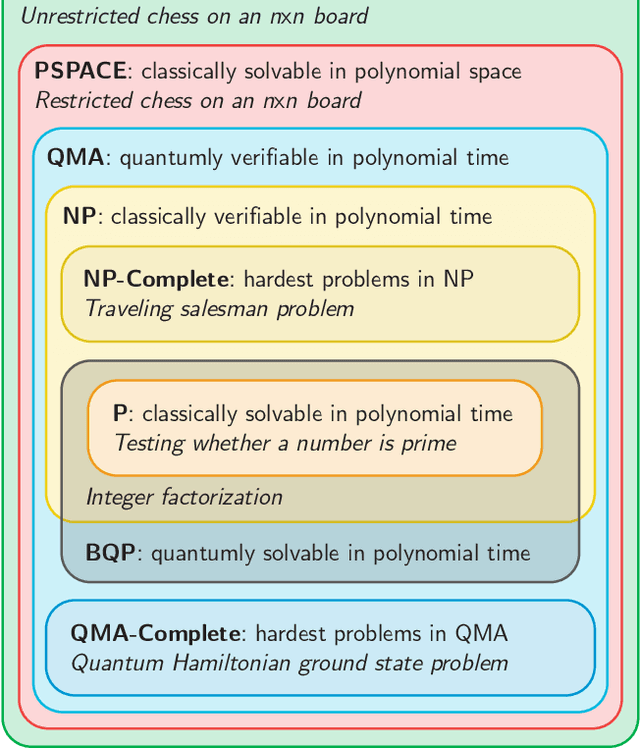
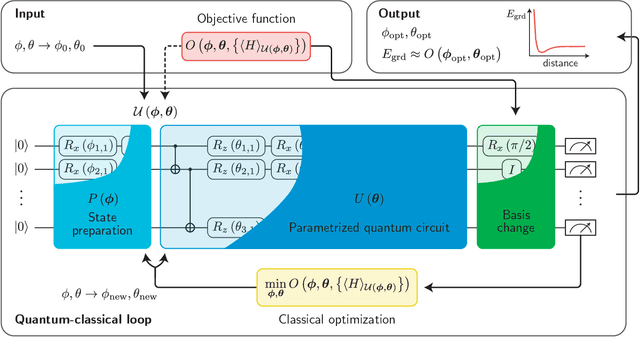
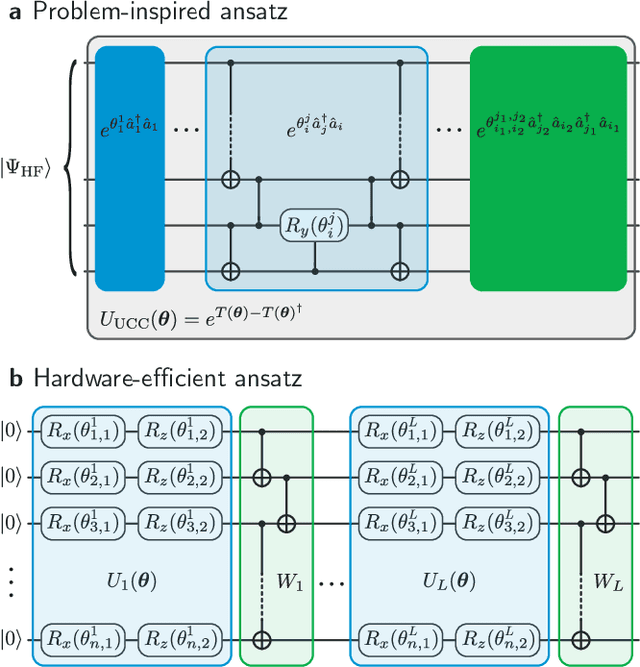

Abstract:A universal fault-tolerant quantum computer that can solve efficiently problems such as integer factorization and unstructured database search requires millions of qubits with low error rates and long coherence times. While the experimental advancement towards realizing such devices will potentially take decades of research, noisy intermediate-scale quantum (NISQ) computers already exist. These computers are composed of hundreds of noisy qubits, i.e. qubits that are not error-corrected, and therefore perform imperfect operations in a limited coherence time. In the search for quantum advantage with these devices, algorithms have been proposed for applications in various disciplines spanning physics, machine learning, quantum chemistry and combinatorial optimization. The goal of such algorithms is to leverage the limited available resources to perform classically challenging tasks. In this review, we provide a thorough summary of NISQ computational paradigms and algorithms. We discuss the key structure of these algorithms, their limitations, and advantages. We additionally provide a comprehensive overview of various benchmarking and software tools useful for programming and testing NISQ devices.
Natural Evolutionary Strategies for Variational Quantum Computation
Nov 30, 2020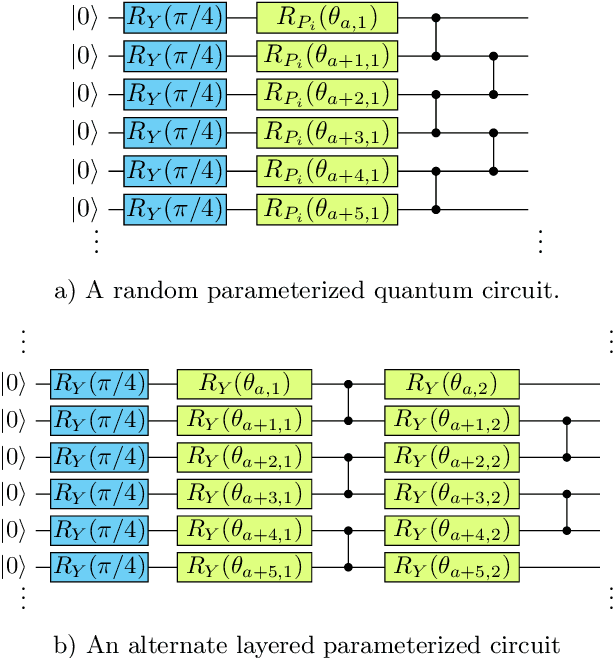
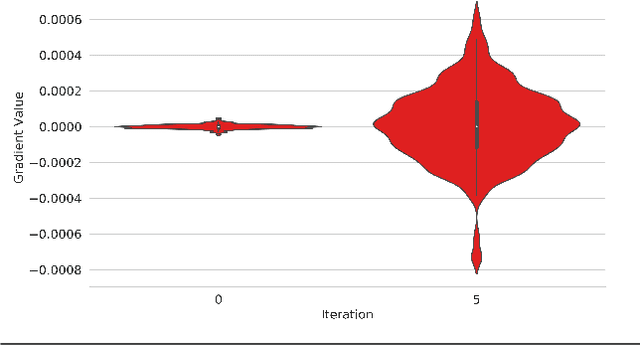
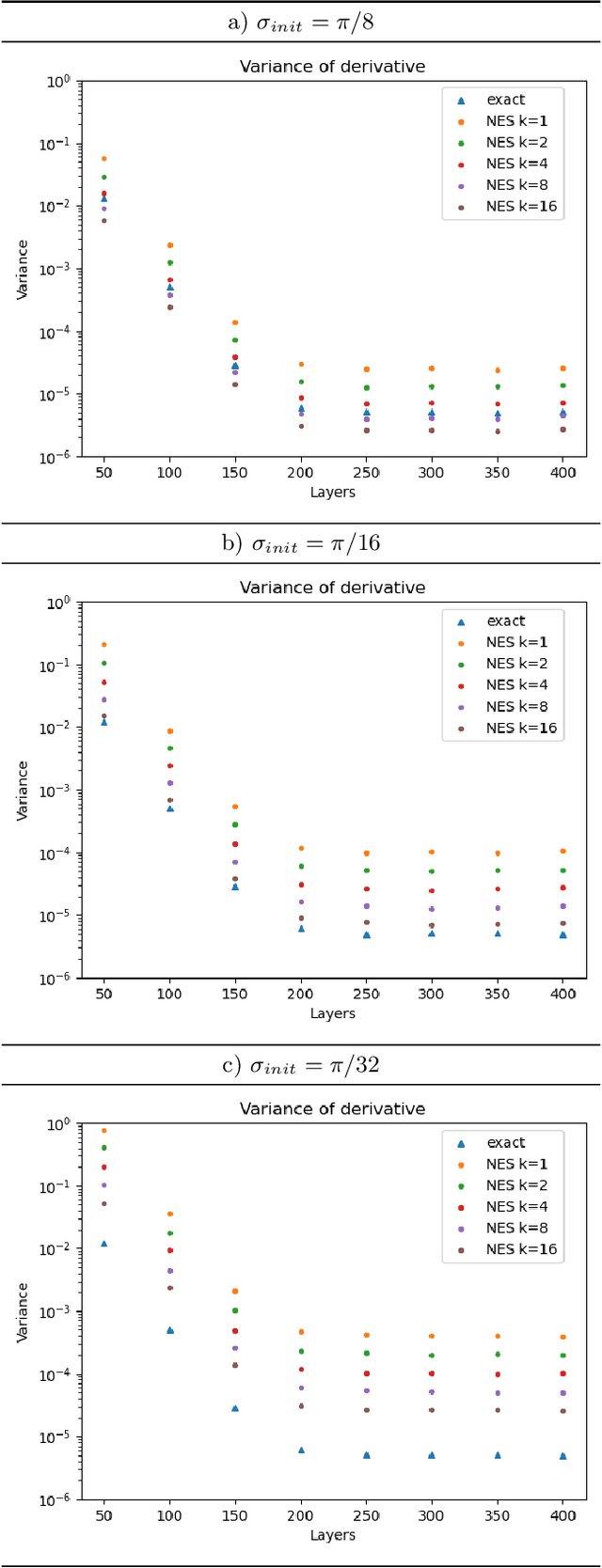
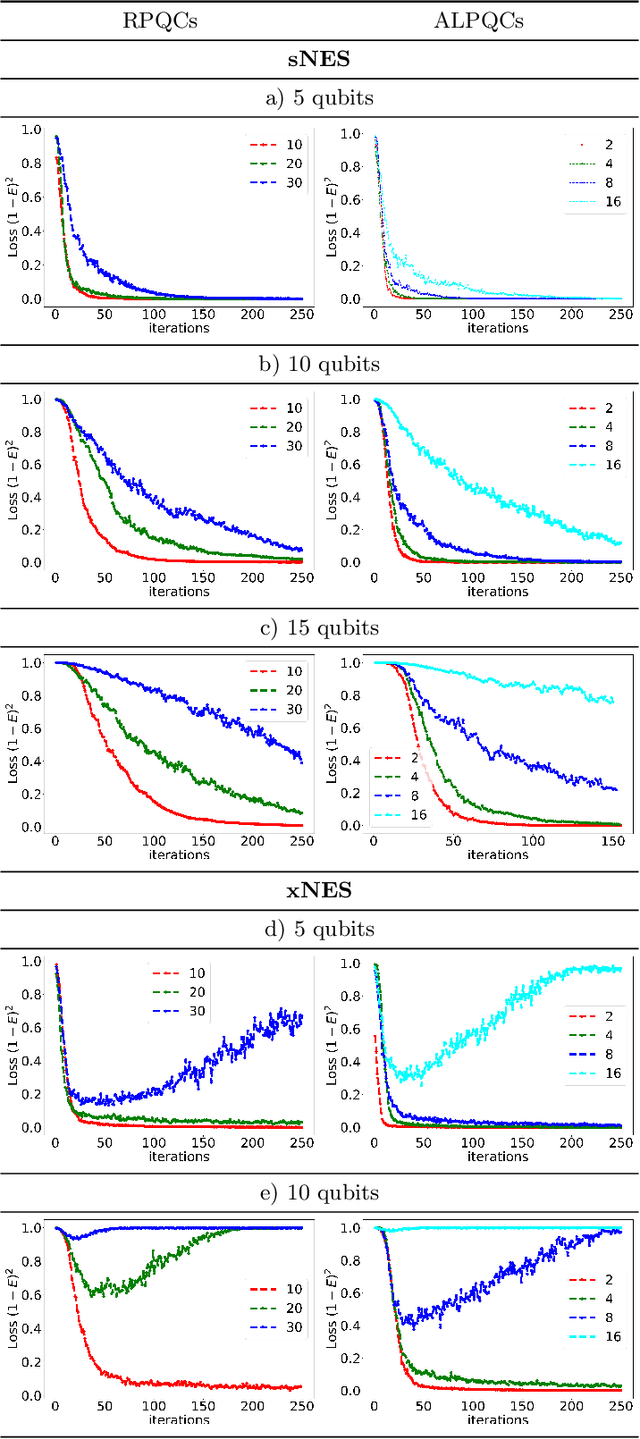
Abstract:Natural evolutionary strategies (NES) are a family of gradient-free black-box optimization algorithms. This study illustrates their use for the optimization of randomly-initialized parametrized quantum circuits (PQCs) in the region of vanishing gradients. We show that using the NES gradient estimator the exponential decrease in variance can be alleviated. We implement two specific approaches, the exponential and separable natural evolutionary strategies, for parameter optimization of PQCs and compare them against standard gradient descent. We apply them to two different problems of ground state energy estimation using variational quantum eigensolver (VQE) and state preparation with circuits of varying depth and length. We also introduce batch optimization for circuits with larger depth to extend the use of evolutionary strategies to a larger number of parameters. We achieve accuracy comparable to state-of-the-art optimization techniques in all the above cases with a lower number of circuit evaluations. Our empirical results indicate that one can use NES as a hybrid tool in tandem with other gradient-based methods for optimization of deep quantum circuits in regions with vanishing gradients.
Experimental demonstration of a quantum generative adversarial network for continuous distributions
Jun 02, 2020
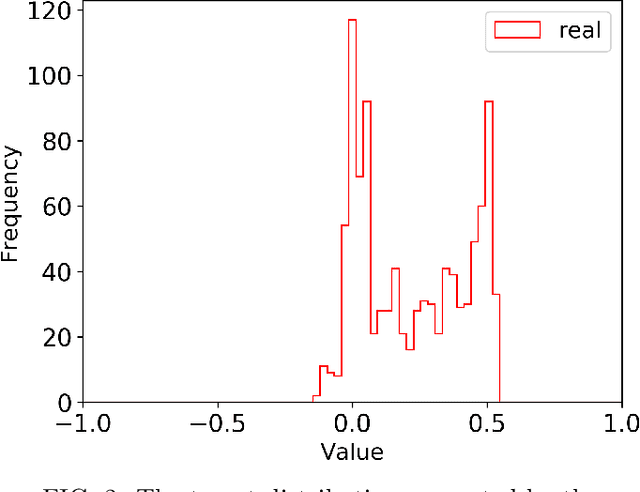
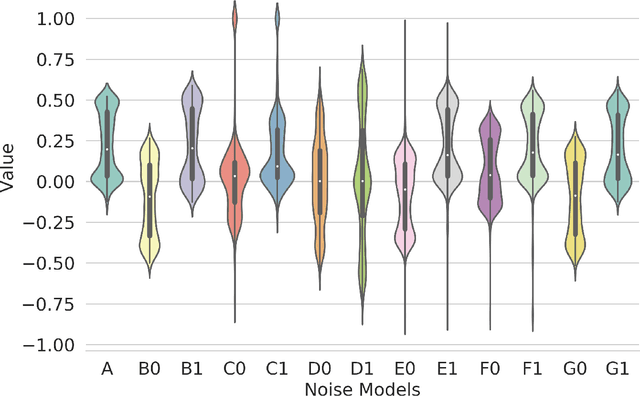
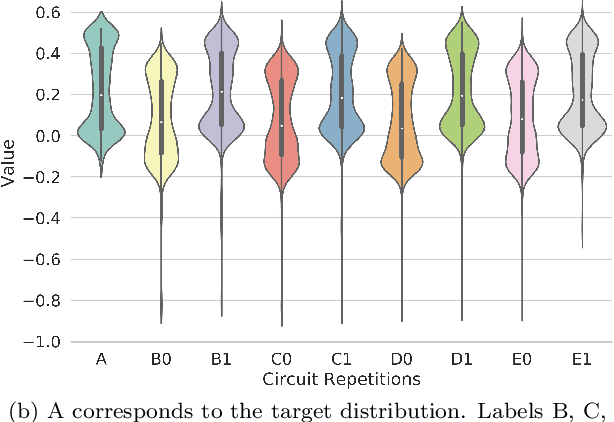
Abstract:The potential advantage of machine learning in quantum computers is a topic of intense discussion in the literature. Theoretical, numerical and experimental explorations will most likely be required to understand its power. There has been different algorithms proposed to exploit the probabilistic nature of variational quantum circuits for generative modelling. In this paper, we employ a hybrid architecture for quantum generative adversarial networks (QGANs) and study their robustness in the presence of noise. We devise a simple way of adding different types of noise to the quantum generator circuit, and numerically simulate the noisy hybrid QGANs to learn continuous probability distributions, and show that the performance of HQGANs remain unaffected. We also investigate the effect of different parameters on the training time to reduce the computational scaling of the algorithm and simplify its deployment on a quantum computer. We then perform the training on Rigetti's Aspen-4-2Q-A quantum processing unit, and present the results from the training. Our results pave the way for experimental exploration of different quantum machine learning algorithms on noisy intermediate scale quantum devices.
An Artificial Spiking Quantum Neuron
Jul 14, 2019
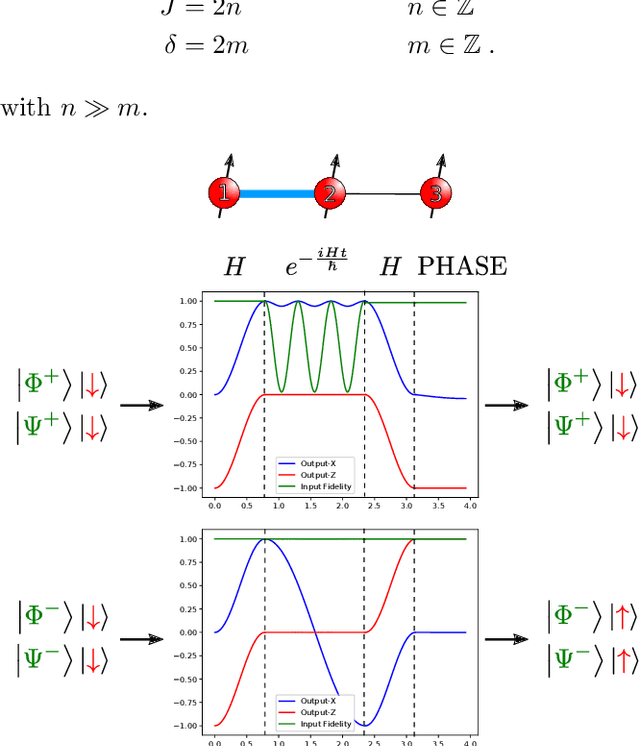

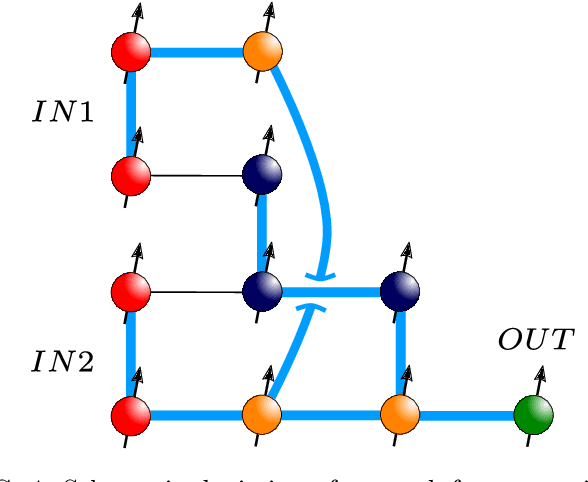
Abstract:Artificial spiking neural networks have found applications in areas where the temporal nature of activation offers an advantage, such as time series prediction and signal processing. To improve their efficiency, spiking architectures often run on custom-designed neuromorphic hardware, but, despite their attractive properties, these implementations have been limited to digital systems. We describe an artificial quantum spiking neuron that relies on the dynamical evolution of two easy to implement Hamiltonians and subsequent local measurements. The architecture allows exploiting complex amplitudes and back-action from measurements to influence the input. This approach to learning protocols is advantageous in the case where the input and output of the system are both quantum states. We demonstrate this through the classification of Bell pairs which can be seen as a certification protocol. Stacking the introduced elementary building blocks into larger networks combines the spatiotemporal features of a spiking neural network with the non-local quantum correlations across the graph.
 Add to Chrome
Add to Chrome Add to Firefox
Add to Firefox Add to Edge
Add to Edge